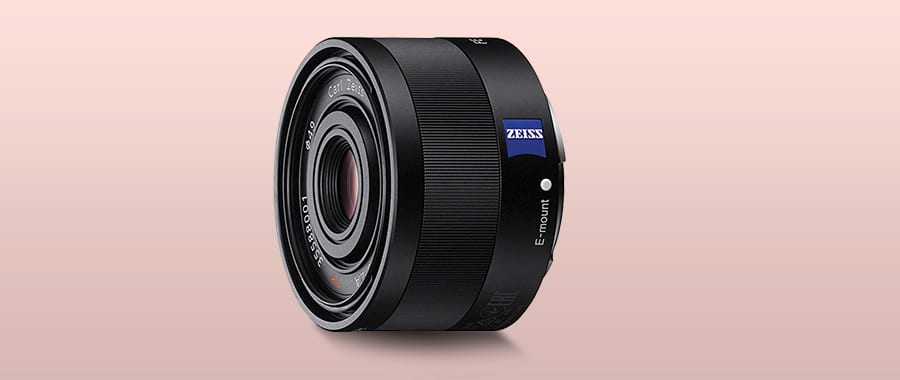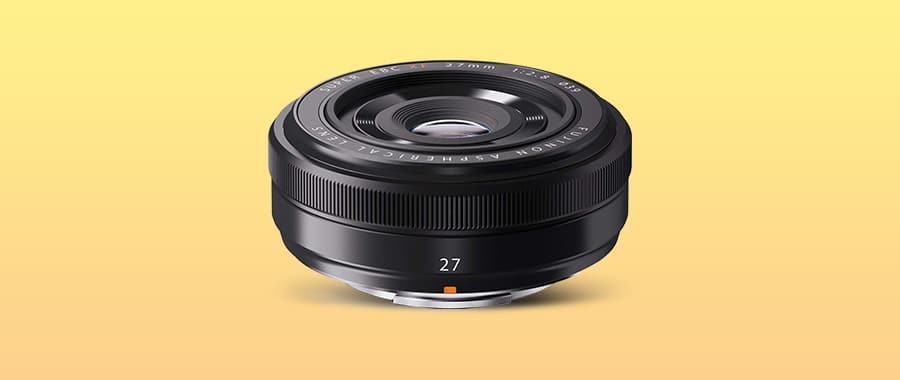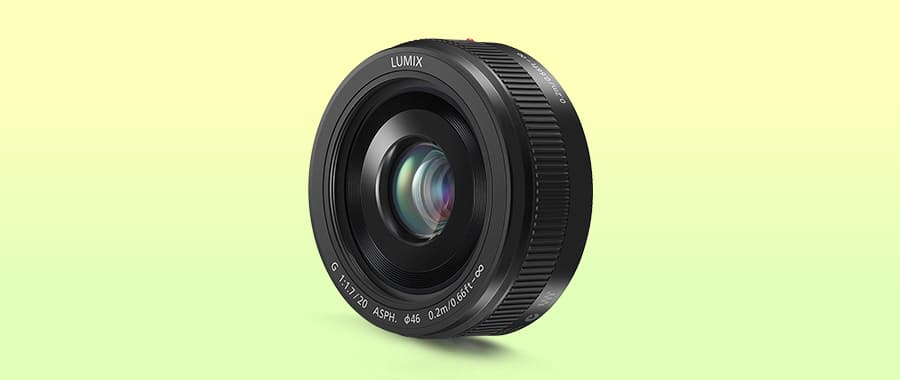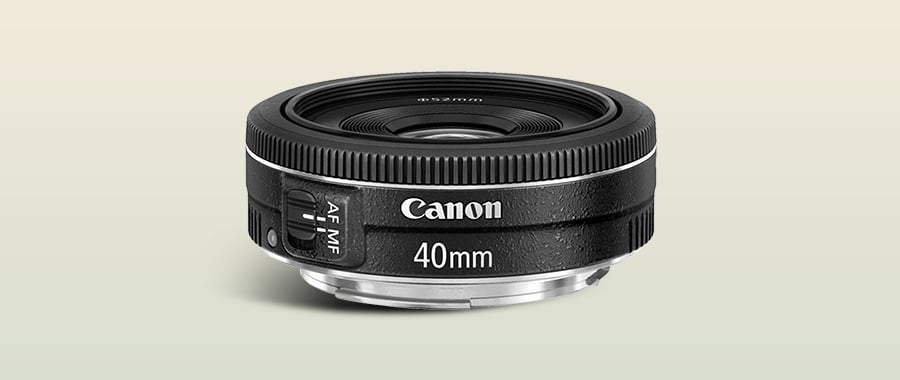
A pancake lens is the first item I recommend to photographers who ask me for lens-buying advice.
Small, lightweight and affordable, attaching a pancake lens to your bulky DSLR or mirrorless camera can make photography fun again.
Pancake lenses are indispensable for street photography, helping the camera fade away and become unobtrusive.
Every photographer should have a pancake lens stashed in a camera bag or jacket pocket, whether you’re a beginner, an amateur or even a professional photographer.
Fortunately, most pancake lenses are affordable, lightweight and simple to use.
The best pancake lenses also offer excellent image quality, especially when paired with a full-frame camera.
So, if you’re looking for a compact lens that won’t break the bank (or your back!), keep reading for my recommendations.
Let’s look closer at the best pancake lens for each camera manufacturer,
Best Pancake Lens for Each Camera Brand in 2023
Best Canon Pancake Lens | Canon 40mm f/2.8 STM
Weight: 130 g (0.29 lb)
Diameter: 68 mm (2.68″)
Length: 22 mm (0.87″)
Minimum focus 0.30 m (11.81″)
Canon lenses have always been the envy of every other brand shooter – their line-up offers everything you could ever need, including a few decent pancake lens options.
If you’ve got a full-frame Canon DSLR, the Canon 40mm f/2.8 STM (a full-frame pancake lens) should be at the top of your shopping list… no matter what genre of photography you intend to shoot.
In fact, DPReview awarded it a Gold award for imaging excellence.
(If you own an APS-C sensor Canon DSLR like the Rebel series, 50D, 60D, 70D or 7D, I’d recommend the Canon EF-S 24mm f/2.8 STM – also a great pancake lens, equivalent to 38mm.)
Attaching either of these lenses to your Canon DSLR will make it feel like a point-and-shoot! Depending on the size of your camera body, you may even be able to slip your camera into your jacket pocket now or at least throw it into a bag without much thought.
If you’re used to shooting fast Canon L-series lenses, f/2.8 might not seem like much, but you can still blur the background with some creamy bokeh with the Canon 40mm f/2.8 STM. 40mm (or 38mm with the EF-S 24mm) is also a really versatile focal length – perfect for everything from portraits to landscapes.
The ‘STM’ on both these lenses refers to Canon’s Stepper Motor technology, designed to be quieter and smoother when focusing – particularly useful for video shooters.
Finally, if you own the Canon EOS M50 (reviewed here), I recommend the excellent Canon EF-M 22mm f/2 – be sure to read the customer reviews to find out why it’s such a popular little Canon pancake lens.
Best Nikon Pancake Lens | Nikon 50mm f/1.8 D
Weight: 155 g (0.34 lb)
Diameter: 64 mm (2.5″)
Length: 39 mm (1.54″)
Minimum focus: 0.45 m (17.72″)
If you’re looking for a Nikon pancake lens, prepare to be sorely disappointed. As of 2023, Nikon doesn’t make one!
(If you use the Nikon 1-mount, several pancake lenses are available, the best of which is the Nikon 10mm f/2.8.)
However, if you’re looking for a lens that’s pocketable, lightweight and as affordable as a pancake lens for Nikon, I’d highly recommend the Nikon 50mm f/1.8D – its weight of only 155 g (0.34 lb) definitely puts it in pancake lens territory.
The Nikon 50mm f/1.8D is a sharp, fast-focusing lens with excellent optics for the price. f/1.8 will allow you to blur the background to separate your subject and shoot in lower light than f/2.8.
I’ve shot professionally with this lens on numerous occasions for product photography, wedding photography, event photography, and more – it really is that versatile… not to mention cheap.
If you must have a Nikon pancake lens, there’s the Yongnuo 40mm f/2.8, designed for the Nikon mount (fitting both full-frame and APS-C sensor cameras at a 60mm equivalent focal length).
I wouldn’t recommend this lens for professionals who should spend more than $100 on high-quality glass.
However, if you don’t earn a living taking photos, the Yongnuo 40mm f/2.8 is great value.
It is also the cheapest way to blur the background in your photos, but you’ll need to get quite close to your subject to take full advantage of the bokeh.
Again, despite this lens’s bargain-basement price, I’d highly recommend you spend a little more and buy the Nikon 50mm f/1.8D.
Best Sony Pancake Lens | Sony 35mm f/2.8
Weight: 120 g (0.26 lb)
Diameter: 62 mm (2.44″)
Length: 37 mm (1.46″)
Minimum focus: 0.35 m (13.78″)
If you have a full-frame Sony Alpha mirrorless camera, there’s only one Sony full-frame pancake lens option – the Sony 35mm f/2.8 Carl Zeiss Sonnar. Fortunately, it happens to be a fantastic lens!
Although not quite as ‘pancake-like’ in its dimensions as some of the Canon offerings, it’s the smallest, lightest Sony lens by far and one of the lowest-priced Sony FE-mount lenses.
This isn’t to say that the Sony 35mm f/2.8 is cheap – not by any means.
It’s definitely an investment, but you’re getting excellent Carl Zeiss quality optics and a fast-focusing, lightweight, compact Sony FE pancake lens that makes any Sony camera an absolute joy to shoot.
On an APS-C sensor Sony Alpha camera, the pancake lens for Sony shooters gives a 52.5mm focal length – perfect for portraits and versatile enough for landscapes, travel, or whatever else.
I’ve shot entire weddings with this Sony e-mount pancake lens alone, and the typical wedding involves a lot of different styles of photos – most wedding photographers I know bring along a selection of Sony lenses.
If you own an APS-C sensor Sony and don’t fancy spending this much on a lens, there are a few other Sony pancake lens options – notably the Sony 20mm f/2.8 or the Sony 16mm f/2.8.
(My pick would be the 20mm since it’s a sharper e-mount pancake lens.)
You’ve also got the option of a zoom pancake lens in the surprisingly good Sony 16-50mm f/3.5-5.6 – this is a convenient all-in-one option if you don’t need the fastest aperture (you’re shooting in decent light or with a flash).
The Sony 16-50mm f/3.5-5.6 is a popular Sony a6000 lens for its size and versatility.
However, if you’ve got the budget, I recommend investing in the 35mm f/2.8 – it’s simply the best pancake lens for Sony full-frame cameras.
Best Fujifilm Pancake Lens | Fujifilm 27mm f/2.8
Weight: 78 g (0.17 lb)
Diameter: 61 mm (2.41″)
Length: 23 mm (0.91″)
Minimum focus: 0.34 m (13.39″)
Currently, Fujifilm produces two pancake lenses – the Fujinon 27mm f/2.8 and the Fujinon 18mm f/2.
Fortunately, both Fuji pancake lenses are very good, much like all the other Fujifilm lenses.
Both lenses can produce impressively sharp results, and image quality is excellent.
However, you will notice some distortion on the 18mm f/2, so I recommend the 27mm f/2.8 over it.
If you absolutely need the widest possible Fuji pancake lens in the smallest package and you’re willing to do some distortion correction in post-production, the 18mm f/2 is a lot of fun.
It also has an aperture ring, a great way to change your aperture with the hand you usually hold the camera with.
However, despite the lack of aperture ring, I recommend the excellent little Fujinon 27mm f/2.8 as the best pancake lens for Fuji X shooters.
It’s great for travel and street photography, particularly making your X-Pro II, X-T100 or whatever other Fuji X camera you own, making it feel like a dinky point-and-shoot.
The optics are decent at f/2.8 (and if you’re close enough to your subject, bokeh looks good, too), but the lens is at its sharpest at f/5.6.
This is the best Fuji pancake lens, available in either black or silver, making your lightweight MILC body feel like a fixed-lens camera.
Best Panasonic Pancake Lens | Panasonic 20mm f/1.7 II
Weight: 87 g (0.19 lb)
Diameter: 63 mm (2.48″)
Length: 26 mm (1″)
Minimum focus: 0.20 m (7.87″)
If you’re looking for a micro four-thirds pancake lens, this Panasonic number takes the biscuit!
Whether you’ve got an Olympus OM-D EM-10 Mark III, a Panasonic GH6, or any other micro 4/3 camera, the Panasonic 20mm f/1.7 II is a joy to use.
Build quality is surprisingly good for a pancake lens, made from metal with a solid feeling.
Focusing speed is excellent – this will depend on the camera body you attach it to, but in general, this is one fast Panasonic pancake lens.
Image quality is decent, too, with good sharpness and contrast, and the f/1.7 maximum aperture allows you to blur background/foreground out-of-focus elements well.
On a micro 4/3 camera, f/1.7 equates to f/3.7.
The Panasonic 20mm f/1.7 II may be the best Panasonic pancake lens, but it’s not the sharpest in the lens line-up, nor is it the best image quality.
However, at this price and size, it’s a fun lens that will bring a smile to your face whenever you see it attached to your MFT camera.
What is a Pancake Lens Used For?
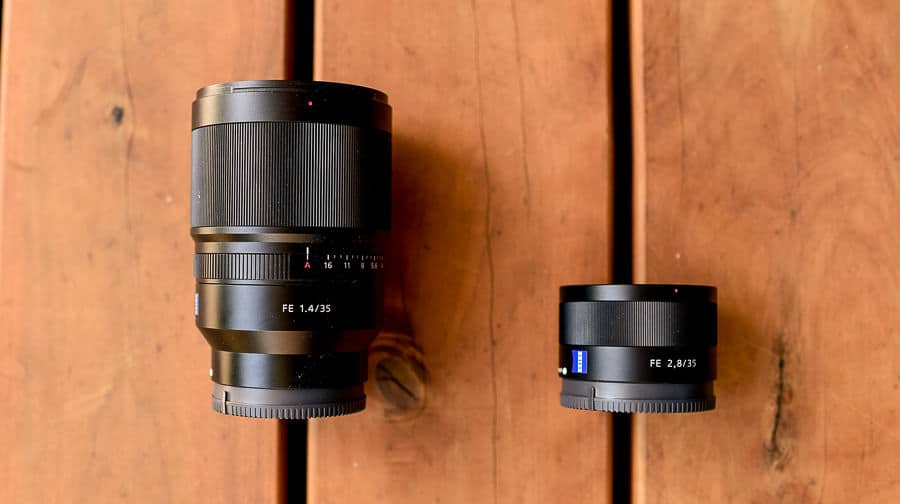

The size advantage of a pancake lens | Sony 35mm f/1.4 vs. Sony 35mm f/2.8
You can use a pancake lens for pretty much any kind of photography.
Personally, I’ve used mine for everything from shooting weddings professionally to taking photos of my kids on holiday.
Aside from being small and light, a pancake lens has several advantages over a regular camera lens.
Pancake Lens Advantages
1) Price
This is top of the list for most photographers – pancake lenses are usually made from relatively cheap materials and contain less glass than larger lenses. This makes them much more affordable and a particularly attractive purchase when you’ve just spent a lot on a camera body!
2) Inconspicuousness
A pancake lens attached to a camera sometimes looks just like a body with no lens attached. A DSLR usually comes with a ‘body cap’ – a pancake lens can sometimes look like this! As such, your camera + lens setup is far more inconspicuous, allowing you to get candid images. Subjects tend to relax more when you don’t have a huge lens pointed at their face!
3) Aperture
A pancake lens can be an affordable way to get a fast-ish aperture – usually around f/2.8, which should be ‘faster’ than the kit lens that came with your camera. Even if you’ve invested in a fancy zoom lens, chances are, it won’t be faster than f/2.8 either.
4) Durability
While the pancake lens itself is usually plastic, it doesn’t protrude much from the camera body, and the lens itself is usually set back from the front of the lens. This means it’s much more ‘protected than a regular lens from knocks and drops.
5) FUN!!
For me, this is the biggest advantage of using a pancake lens. No matter what lens you’re used to shooting with, attaching a pancake lens will make your camera feel great. It’s genuinely liberating not to feel any weight at the end of your camera. This alone can make you want to pick up your camera and shoot daily.
Pancake Lens Disadvantages
There isn’t a whole lot to complain about pancake lenses. Sure, they’re not as sharp edge-to-edge as some lenses, and build quality could be better, but at this price, it’s hard to argue that pancake lenses are excellent value for money.
Most people buy a pancake lens for the size/weight benefits, but soon, they realise that the drawbacks in image quality aren’t as apparent as they may have thought.
In short, buying a pancake lens is something I recommend to all photographers. They really do make photography fun, mainly if you’re used to bulkier lenses.
Frequently Asked Questions
What does pancake lens mean?
A pancake lens is a colloquial term for a lens shorter than it is wide – hence, it looks like a ‘pancake’. Due to their compacted dimensions, pancake lenses are permanently fixed focal length (‘prime’) lenses. They’re also much smaller and lighter than a regular lens.
Are pancake lenses good?
Yes, pancake lenses are great! Due to their compactness, they make any camera body (no matter how large) feel much more comfortable and pleasurable to shoot. They are usually much cheaper than other prime lenses, offering a relatively fast maximum aperture.
What is a 40mm lens good for?
A 40mm lens differs between a traditional wide-angle lens and a standard portraiture lens field of view. This makes it versatile enough to shoot a wide range of subjects – wide enough for landscapes whilst being ‘tight’ enough for portraits, with no distortion.
Can you use a pancake lens on a non full frame camera?
While most pancake lenses on the market are made for full-frame cameras, you can still use them on an APC (non-full frame) camera, albeit with some cropping of the field of view and a ‘magnified’ focal length – the ‘crop factor’.
Buying Pancake Lenses | Final Words
Pancake lenses are intriguing little things for photographers – how can a small and lightweight take a good quality photo? How can an f/2.8 prime lens be this cheap?!
They’re also a secret weapon for professionals – compact, unassuming, perfectly balanced on any camera body, and the perfect backup lens to keep stashed in a jacket pocket.
However you decide to use your pancake lens, just be sure to use it. Mine’s attached to my Sony 90% of the time when I’m at home – having such a lightweight, compact camera setup makes photography much more fun.



